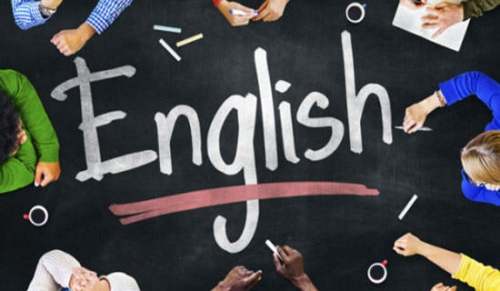- 相關推薦
金融英語模擬試題及答案
SECTION TWO(Compulsory):Answer the questions in this section.

Reading Comprehension: (10 points)
Joseph Glass, CFA, is a consultant who provides advisory services to large manufacturing companies. Glass has been retained by ABCO, a leading manufacturer of widgets for automobiles in the United States. ABCO has hired Glass to evaluate the possibility of expanding their current base of operations by building an additional facility in South America. Management of ABCO has identified an increase in demand for widgets in South America over the past decade, and any new manufacturing facility would produce goods to satisfy that void and would be distributed and sold across South America.
Glass is not familiar with the current economic climate in South America, but is aware that several governments have attempted to encourage economic development in their countries through the enactment of pro-business legislation. Two of these countries, Venezuela and Peru, both have the reputations of being “friendly” to foreign economic investment within their borders. The two countries share some similarities: both, until the past twenty years, were primarily agricultural economies with little industrial development. Also, both countries can offer a relatively low-cost labor force, although their workers in general, are not highly skilled.
The government of Peru has declared that protecting the country’s environment is of utmost importance, and has established a regulatory body that oversees any environmental concerns that may arise as the country becomes more industrialized. Fairly stringent regulations have already been put into place in order to ensure that going forward, the operating practices of manufacturers within their country’s borders will be in balance with the government’s concern for their county’s natural resources. Regulations cover areas of concern such as air emissions, water conservation and the use of sustainable resources. Glass advised ABCO that a cost-benefit analysis must be performed to accurately determine both the direct and indirect costs of compliance with the regulations.
The Venezuelan government has taken steps to ensure that it can carefully manage the development of its country’s emerging economy, and to ensure that a competitive market is maintained. A regulatory agency was established five years ago to provide guidance for any new manufacturing concern seeking to operate in Venezuela. The head of the agency is Juan Santos, the former CEO of one of the first modernized manufacturing facilities in the country. During his tenure as head of the agency, he has demonstrated his ability to render decisions that attempt to simultaneously satisfy legislators, industry participants, and consumers. Glass is impressed by Santos’ work so far, but realizes that over the past five years, Venezuela has experienced a period of relatively slow economic development. Glass believes that Santos’ skills will truly be put to the test in the upcoming years of the anticipated economic expansion.
Glass acknowledges the need for governmental regulation of industry, but recognizes that there always are offsetting costs, both short-term and long-term of such controls. Based upon his knowledge of events that have occurred in the United States over the past thirty years, Glass recommends that ABCO continue to carefully monitor economic developments in both countries even after a site for a new manufacturing facility is selected.
Part 1)
Should ABCO build a new facility in either of the two countries, it is almost a certainty that they would be the low-cost producer of widgets, with the capacity to satisfy nearly all demand in the region. A natural monopolist operating in an unregulated industry will produce at the point where:
A. Marginal costs equal marginal revenue.
B. Average costs equal marginal revenue.
C. Average costs equal average revenue.
D. The marginal cost curve intersects the demand schedule.
Part 2)
The social regulation policies enacted by the government of Peru would least likely to cause which of the following outcomes? ()
A. Higher costs of production.
B. A disproportionately higher compliance expense for larger firms rather than smaller firms.
C. Higher prices for the end consumer.
D. Attempts by industry participants to avoid compliance through creative response.
Part 3)
If ABCO were to build its new facility in Peru, compliance with the country’s regulatory policies will increase the price of their product by approximately ten percent. Some consumers may respond by not replacing the widgets in their automobiles as frequently as before, which will cause decreased fuel efficiency. This unintended effect of regulation is an example of: ()
A. The capture hypothesis.
B. A creative response.
C. A feedback effect.
D. The share-the-gains, share-the-pains theory.
Part 4)
The appointment of Santos, an industry “insider”, to head the regulatory agency in Venezuela has the potential to cause a reaction predicted by which of the following theories of regulatory behavior? ()
A. Rate-of-return regulation.
B. Share-the-gains, share-the-pains theory.
C. The capture hypothesis.
D. Cost-of-service regulation.
Part 5)
Santos, as the head of the main regulatory body in Venezuela, must decide how to manage the effects of an unanticipated sharp increase in the cost of electricity. Santos proposed regulation that will allow manufacturers to pass on the increased costs at scheduled intervals over a five year period. This approach is an example of: ()
A. Rate of return regulation.
B. Cost-of-service regulation.
C. Share-the-gains, share-the-pains theory.
D. Social regulation.
Explanations of terms:(10 points)
1. Liquidity
2. Cost-push inflation
3. Surveillance
4. External debt
5. Foreign reserve
Question3: How many factors to explain the reserve holdings?
Question4: What is The Monetary Policy Instruments of the Central Bank?
Question5: What is Concept of Trust Market?And what the composition of it is?
Question6: What is the Money Laundering?